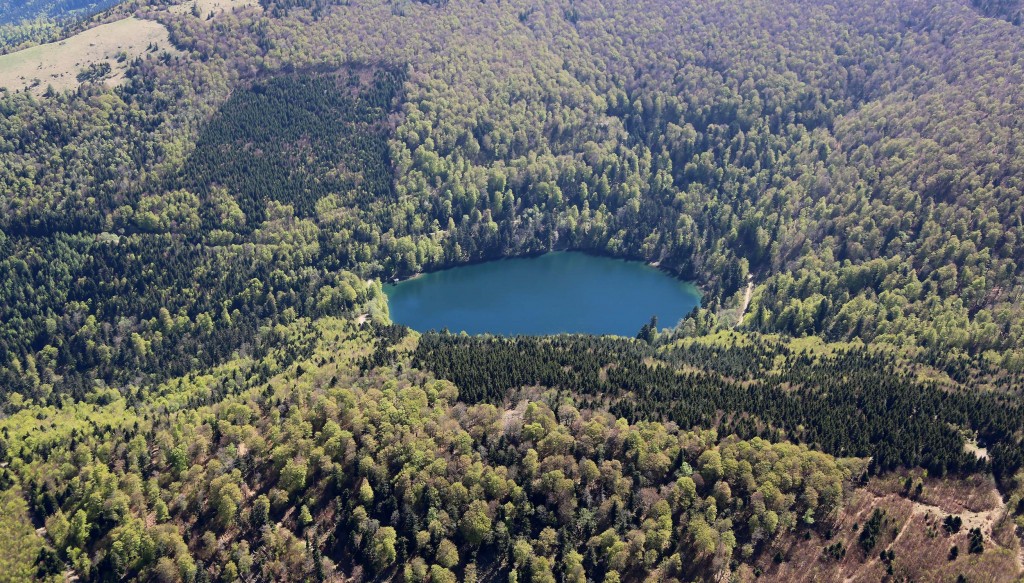With seven villages on the Wine Route and six Grands Crus (Kitterlé, Saering, Kessler, Spiegel, Ollwiller and Pfingstberg), the Land of Art and History of the Guebwiller Region owes a lot to its wine-growing past. It also has many forests, which are an essential part of the Florival landscape.
The vine: from myth to history
Germanic mythology attributes the establishment of the vine to the God Odin. Wounded in the foot by a wild boar, he would have fertilized the valley by giving birth to a flower from each drop of his blood. The flowers invaded the hillsides to bloom brilliantly in the grapes laden with divine blood. In fact, the vine is present in Guebwiller from the VIIIe century with the arrival of Scottish monks who founded Murbach Abbey. From their abbey, the abbots exercise their sovereignty over the whole of the valley, and even beyond. Guebwiller develops thanks to viticulture from the XNUMXthe century. The abbey collects part of the harvest as a tax. The "Florival" is perceived by the religious as the ideal and fertile land. In the XIe century, Flurandus describes: “There is a place, on the borders of Alsace and the Vosges, called Murbach, where the lord placed the head of the Holy Martyr; fruitful in virtues, similar to the center of the earth, set like a celestial pearl in a golden conch. Fertile hillsides spread out their sides covered with vines, making the Vallée Fleurie another paradise where the blood of Bacchus flows freely”. Throughout the Middle Ages, Alsatian wines enjoyed a fine reputation, being the southernmost of the Holy Roman Empire. Thanks to transport on the Rhine and the Ill, production is exported to Switzerland, Swabia, Germany, England, the Netherlands and Italy.
The Winemaker Renaissance
The Wanne (Kessler), Saering and Kitterlé wines are already marketed abroad. Guebwiller wine is so appreciated that it is necessary, in the XVIIe century, to affix a certificate of origin (Ladtzettel) to each barrel of wine in order to avoid counterfeits. There is then only one white: the Zwicker, and the hierarchy is made according to the soil and the climate. Soultz and Guebwiller, like the other wine-growing localities in the area, experienced a revival at the end of the XNUMXth century.e and at the beginning of the XVIIe centuries. Prosperity allows the construction of many houses in Soultz. It was precisely between 1525, the year of the Peasants' War, when the town was taken by the Rustauds, and 1632, the start of the Thirty Years' War in Alsace, that the beautiful Renaissance winegrowers' residences were built. Oriels, spiral staircases, vintage porches, all these architectural elements are signs of prosperity. Even today, the city retains in its center the urban fabric of the XVIIe century. In Guebwiller, the excessive fragmentation of land and the heavy charges imposed by the abbots prevent the accumulation of wealth, which explains the absence of beautiful Renaissance architecture as in Soultz, Riquewihr, Obernai or Barr. Numerous activities gravitate around viticulture: cooper, blacksmith, merchant and gourmet… These craftsmen command wealthy residences, whose porches generally bear the initials of the owner, accompanied by the insignia of their profession.
The terraces of Guebwiller
Shaped by man, the Guebwiller vineyard has a characteristic look. More than 50 kilometers of low walls in pink sandstone shaped in dry stone criss-cross the hills under the Vosges, preventing the erosion of the particularly sandy soil. The stones come from the quarries on the plateau. More than a simple feature of the landscape, these low walls require the know-how of a team of specialized masons who ensure the maintenance of these structures throughout the year. Defying an ungrateful topography, generations of winegrowers have competed in ingenuity to cultivate these invaluable vineyards: stone stairs to go from one terrace to another, half-moon stones, crossed by a wooden stake to plant a last vine up to above the low wall, planting the vines horizontally… All these efforts are prompted by the search for a wine of exceptional quality thanks to a harsh terroir with poor and sandy soil.
The legend of Kütterlé
Of forests and hills
The Guebwiller region offers a staggered mountain landscape from 200 to 1 meters and organized around the Lauch and Rimbach valleys. Woodlands occupy most of the slopes. Above 400 meters, the forest gives way to stubble stripped by the wind and the cold. The current farm-inns owe their existence to high-altitude farms, once used as summer homes by breeders, also called “marcairies”. They made cheese which they then sold at the Guebwiller market. To delimit the grounds, they erected stone walls, still visible today. The Bollenberg limestone hill is a real natural monument. About 1 years ago, a hot and dry climate reigned in Alsace. The Rhineland was home to Mediterranean flora and fauna. A millennium later, a climatic reversal occurred and threatened these species with extinction. In the Rhine ditch, only one refuge was offered to them: the hills under the Vosges and their exceptionally hot and dry microclimate. This ecosystem has been maintained until today on the arid moors of Bollenberg. It is unique in Europe: it is a living relic of a past several millennia old. According to legend, this is also where witches from all over the region once gathered to celebrate their Sabbaths.

